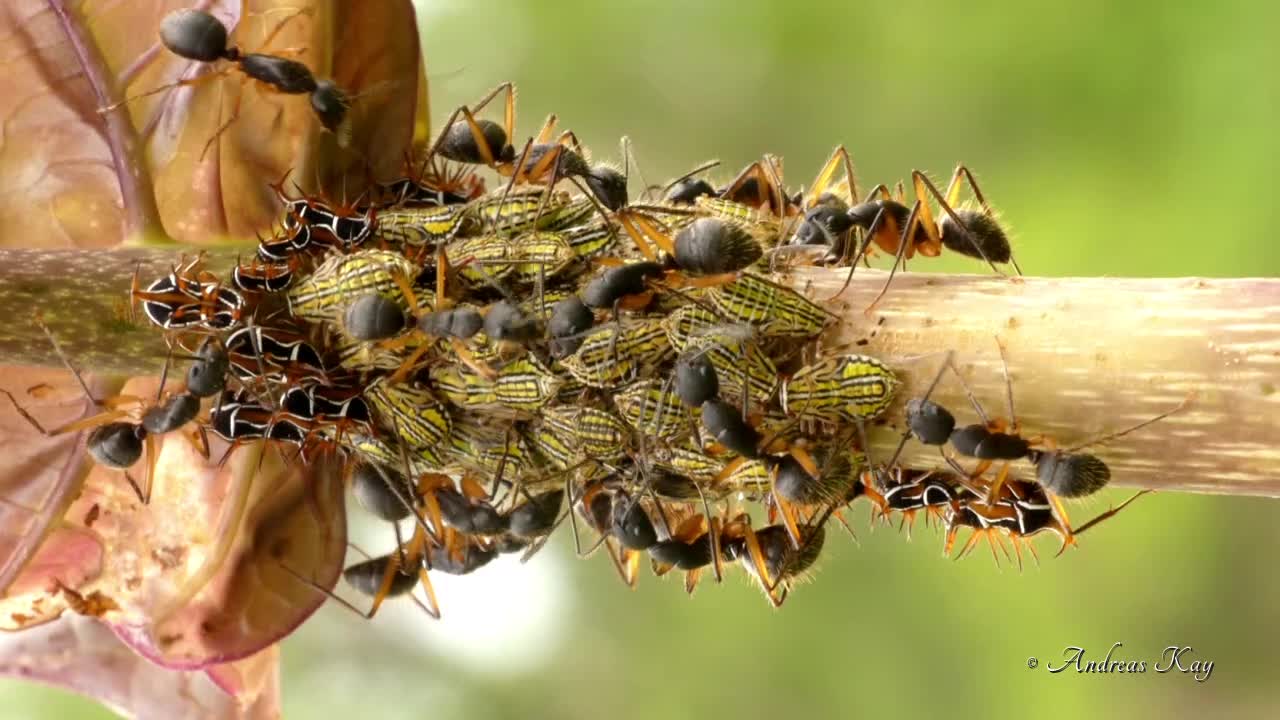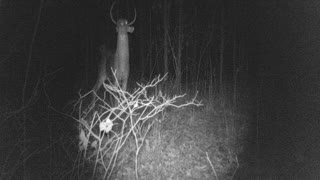Premium Only Content

Ants Tending Treehoppers For Honeydew In Ecuador
These yellow treehopper nymphs and black and white adults were filmed in the Amazon rainforest of Ecuador. They feed upon sugar containing sap of a plant. Treehoppers pierce the plant stems with their beaks and feed upon the juices. The young can frequently be found on herbaceous shrubs and grasses, while the adults more often frequent hardwood tree species.
Yellow treehopper nymphs are typically gregarious and excrete a substance rich in sugar as excrement, also called honeydew. The excess sap concentrated with glycose naturally summons forest ants. The ants collect it and nourish upon the sugar and, in return, protect the treehoppers from predators.
This is an example of mutualism, a form of symbiosis where both species benefit. The mutually beneficial cooperation between the treehopper and the forest floor ants basically levels down to the following: the nymphs provide a first supply of nourishment to the ants, and in turn, the ants physically act like bodyguards, protecting the nymphs from predators.
Appart from the symbiotic relationship with ants and. in some cases wasps, the treehopper has another devious skill in its sleeve. In its adult stage, the treehopper develops outgrows on its body that mimics horns in order to prevent predators from spotting them.
As it always goes in nature, the week species populating the bottom of the food chain, in order to survive must develop skills and cunning. The treehopper uses other species to mask its weakness: symbiosis with ants and wasps and colorful bodily mimicry. This is definitely one witty survivor!
-
 0:07
0:07
Elkrivermr1970
3 years agoBuck tending scrape
111 -
 0:09
0:09
ViralHog
4 years ago $0.24 earnedPet Lizard Plays with Ants on Phone
1.74K1 -
 5:06
5:06
seamus1
4 years agoPeru to Ecuador 2019
171 -
 1:50
1:50
Benfilm
4 years agoBattle between ants and wasps over deceased grasshopper
22.7K3 -
 9:23
9:23
seamus1
4 years agoEcuador to Galapagos islands 2019
197 -
 1:09
1:09
Now In Ecuador
3 years agoSunset Near Crucita, Ecuador
32 -
 2:17
2:17
Now In Ecuador
4 years agoSunset in San Lorenzo, Ecuador
90 -
 0:15
0:15
Andrew501
3 years agoParque las Carolinas, Quito Ecuador
30 -
 1:32
1:32
vanguardiacom
4 years agovolcán hace erupción en ecuador
1.21K -
 0:17
0:17
Now In Ecuador
4 years ago $0.01 earnedOur Ocean View in Crucita, Ecuador
1471